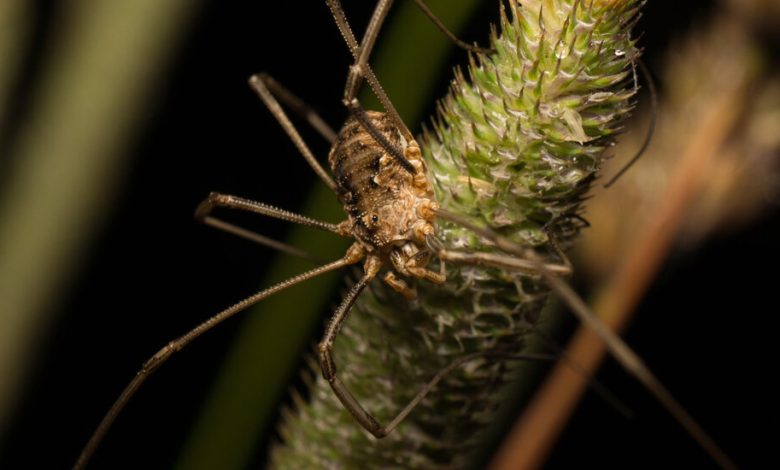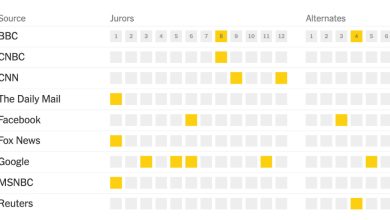Daddy Longlegs Have Been Hiding Extra Eyes From Us

Guilherme Gainett, then a biologist at the University of Wisconsin-Madison, was looking through a microscope at the embryo of a daddy longlegs when he saw it — or, rather, saw them. Daddy longlegs, the group of splendidly leggy arachnids also known as harvestmen, have been thought to have just two eyes. But there on the animal’s body, illuminated with fluorescent markers, were what looked like four more vestigial eyes.
In a paper published last week in the journal Current Biology, Dr. Gainett, now at Boston Children’s Hospital, and his co-authors report that they believe they have discovered remnants in the harvestman species Phalangium opilio of what may have once been fully functional eyes in the arachnids’ ancestors. Though these vestigial eyes don’t mature fully, they appear on the harvestmen’s bodies as they develop, shaped by many of the same genes as the creatures’ true eyes.
Arachnids include spiders, scorpions, harvestmen and other arthropods, and divining the relationships among this sprawling group of organisms is tricky. To do so, researchers must draw on both genetic information from modern arachnids and fossils of those that have long since vanished. Interpretations of the relationships among arachnids can vary widely: Dr. Gainett and his graduate school adviser; Prashant Sharma, a biologist at the University of Wisconsin; and their colleagues courted taxonomic controversy in 2022 when they published a family tree that put horseshoe crabs, previously thought not to be arachnids, in the group.
For the current study, Dr. Gainett used fluorescent tags to study the development of harvestman eyes. The tags were designed to stick to opsins, light-sensitive proteins that exist in eyes across the animal kingdom. Looking at the shapes traced by the tags, he matched the locations of the unexpected opsins on the harvestmen to approximately where extra eyes grow on spiders and horseshoe crabs. (Spiders typically have eight eyes, and horseshoe crabs have 10.) These findings suggest that the neural architecture that handles the daddy longlegs’ vision may be quite old. The results could also help in sketching out the family tree of arachnids.
The researchers believe that this new finding helps explain some mysteries about daddy longlegs. Some of the oldest known fossils of harvestmen, in deposits of quartz, seem to have two full pairs of eyes; modern organisms have only ever been known to have one. The discovery of these vestigial eyes may help link the fossils, which are thought to be more than 400 million years old, more directly with their descendants, clarifying their place on the arachnid family tree.
The study, Dr. Sharma said, “suggests they have changed very little for a very long time.”



